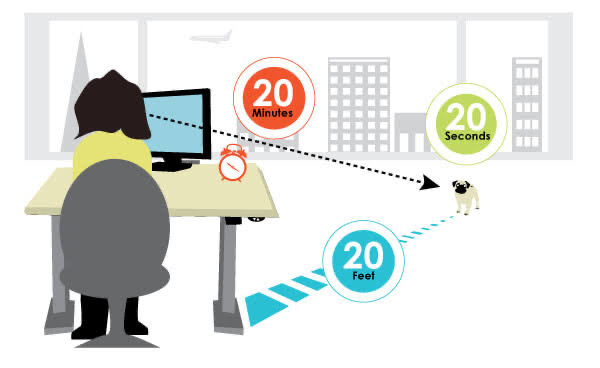Our eyes work tirelessly every day, especially in today’s digital world where prolonged screen time is common. Overuse can lead to eye strain, dryness, and even long-term vision problems. While proper rest and a balanced diet are essential for eye health, eye exercises can also help improve focus, reduce strain, and maintain healthy vision.
Benefits of Eye Exercises
Eye exercises are simple activities designed to strengthen the eye muscles, enhance focus, and promote relaxation. Some of their key benefits include:
1. Relief from Eye Strain: Regular exercises help alleviate discomfort caused by staring at screens or reading for extended periods.
2. Improved Focus and Concentration: Exercises train the eyes to shift focus smoothly between near and far objects.
3. Better Eye Coordination: They help the eyes work together more effectively, especially in cases of misalignment.
4. Reduced Risk of Digital Eye Strain: These exercises promote healthier habits to combat the effects of prolonged screen use.
5. Enhanced Vision: Some exercises can support natural vision improvement when paired with proper eye care.
Effective Eye Exercises to Try
1. The 20-20-20 Rule

One of the simplest ways to reduce digital eye strain:
•Every 20 minutes, look at an object 20 feet away for 20 seconds.
•This relaxes your eye muscles and reduces fatigue.
2. Eye Rolling

This exercise helps improve flexibility and reduces stiffness in the eye muscles:
– Sit comfortably and look straight ahead.
– Slowly roll your eyes in a clockwise direction, then counterclockwise.
– Repeat this 5–10 times in each direction.
3. Focus Shifting
Enhances the eyes’ ability to shift focus between distances:
– Hold a pen or finger at arm’s length.
– Focus on the pen, then shift your focus to an object farther away.
– Alternate between near and far focus for 10–15 repetitions.
4. Palming

A relaxing technique to ease tension:
– Rub your hands together to generate warmth.
– Place your palms gently over your closed eyes without applying pressure.
– Relax and breathe deeply for 1–2 minutes.
5. Figure Eight
Improves eye muscle coordination and control:
– Imagine an 8 lying horizontally (like the infinity symbol) about 10 feet in front of you.
– Trace the shape with your eyes, moving slowly.
– Switch directions after a few repetitions.
6. Blinking Practice
Helps combat dryness and refreshes the eyes:
– Blink rapidly for 10–15 seconds, then close your eyes and relax for a few seconds.
– Repeat this exercise several times a day, especially during prolonged screen use.
Tips for Healthy Eyes
– Maintain a Balanced Diet: Eat foods rich in Vitamin A, omega-3 fatty acids, and antioxidants to support eye health.
– Stay Hydrated: Drink plenty of water to prevent dryness.
– Adjust Screen Settings: Use blue light filters, adjust brightness, and sit at an appropriate distance from screens.
– Take Regular Breaks: Follow the 20-20-20 rule or step away from screens every hour.
– Visit an Eye Specialist: Get regular eye check-ups to monitor and address any potential issues.
Conclusion
Eye exercises are a simple yet effective way to maintain healthy vision and reduce strain. Incorporate them into your daily routine, especially if you spend long hours on screens. Combined with a healthy lifestyle and regular eye care, these exercises can help ensure your eyes remain strong and refreshed for years to come.

